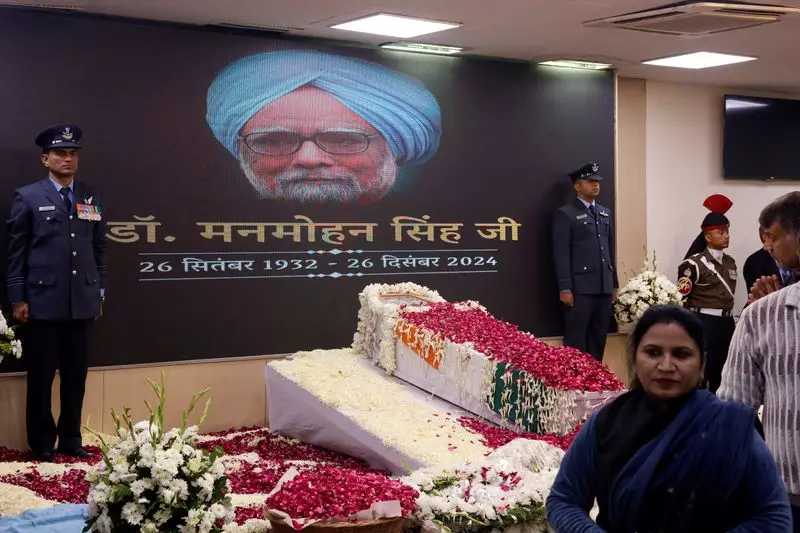The passing of Manmohan Singh, India’s former Prime Minister, on a Thursday at the age of 92, marked a pivotal moment in the nation’s political and emotional landscape. On Sunday, his body was cremated with full state honors along the banks of the Yamuna River in New Delhi, an event that brought together leaders from all walks of life and reverberated across the globe. As the nation mourned, the air was thick with reverence as themes of gratitude, criticism, and reflection emerged.
Singh’s final journey was steeped in tradition, reflecting the dignity both he commanded and the respect he earned throughout his tenure. His body, adorned with the Indian flag, was paraded through the streets on a flower-laden carriage and was subsequently laid to rest in a Sikh ceremony where religious hymns filled the air. The transformation of the Indian flag into a saffron cloth prior to the cremation was emblematic of his cultural roots.
Such grandeur is typical for a leader of Singh’s stature; however, it is also a reminder that the respect one garners in life can often contrast with the narratives that unfold in the press. As Singh noted before yielding to history, “history will be kinder to me than the contemporary media”—a phrase echoing the struggles he faced during his last decade in charge of a coalition beset by controversy.
Legacy and Reflection
The richness of Singh’s legacy was highlighted by current Prime Minister Narendra Modi, who attended the funeral and characterized Singh’s influence as that of one of the nation’s “most distinguished leaders.” In a political climate often polarized by ideology, Singh’s impact as the architect of India’s economic liberalization remains resonant. Critics, particularly during Modi’s administration, have pointed to Singh’s critiques regarding demonetization and the implementation of the goods and services tax, signifying the complex and often contentious nature of political legacies.
Additionally, Singh’s passing resonated internationally, eliciting condolences from world leaders across the globe, including those from the United States, Canada, and neighboring countries. This outpouring emphasizes how Singh transcended regional politics to leave an indelible mark on global diplomacy and economic policies.
Singh is survived by his wife and three daughters, who witnessed first-hand the toll public life takes on personal relationships. The emotional weight of his funeral was further amplified by the presence of Congress leader Rahul Gandhi, who accompanied Singh’s family during the procession, a poignant reminder of family ties amid public responsibilities.
This time of mourning serves not only as a farewell to a stalwart figure in Indian history but also as an opportunity for the nation to reflect on the nuances of governance, integrity, and leadership. Singh’s dedication to public service will likely be revisited and debated at length, ensuring that while he may have departed from this world, the discussions surrounding his life and legacy will persist.

